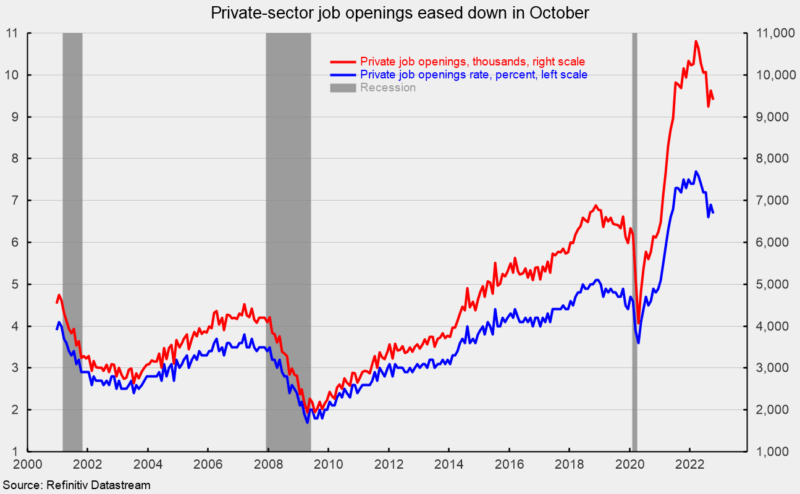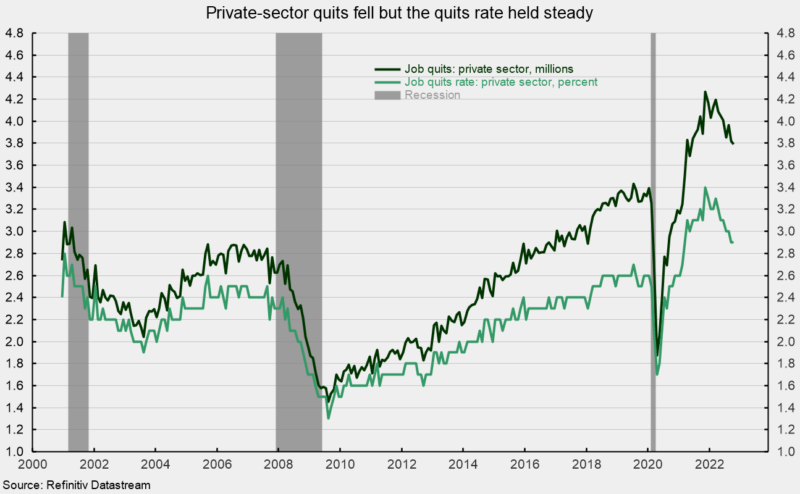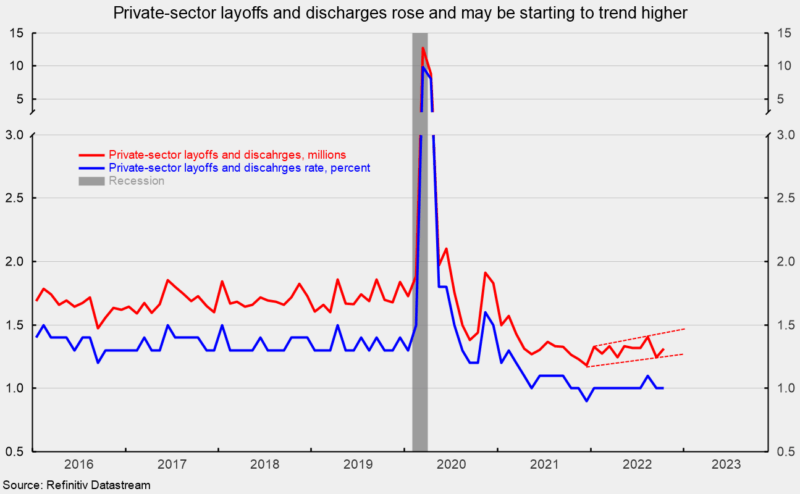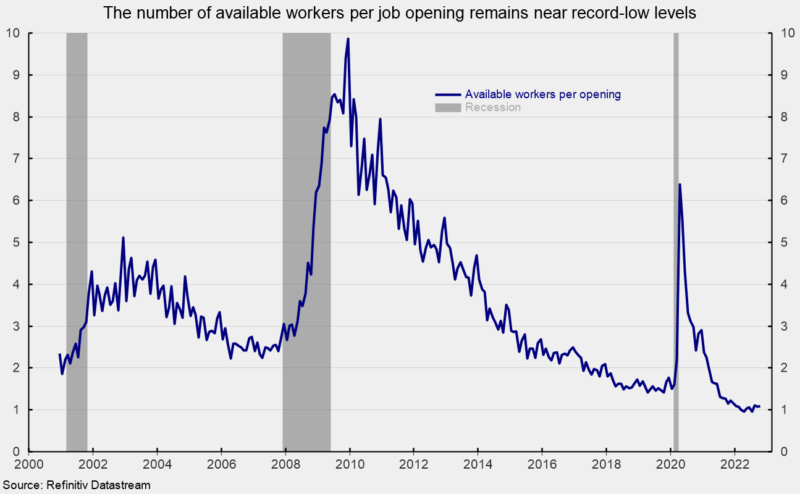Private-Sector Job Openings Remain High Despite Falling in October
The latest Job Openings and Labor Turnover Survey from the Bureau of Labor Statistics shows the total number of job openings in the economy decreased to 10.334 million in October, down from 10.687 million in September.
The number of open positions in the private sector decreased to 9.412 million in October, down from 9.627 million in September. October was the fifth decline in the last seven months since hitting a record high in March (see first chart).
The total job openings rate, openings divided by the sum of jobs plus openings, fell to 6.3 percent in October from 6.5 percent in September, while the private-sector job-openings rate decreased to 6.7 percent from 6.9 percent in the previous month (see first chart). The October result for the private sector is 1.0 percentage points below the March peak.
The industries with the highest openings are education and health care (2.172 million), professional and business services (1.794 million), trade, transportation, and utilities (1.644 million), and leisure and hospitality (1.578 million). The highest openings rates were in leisure and hospitality (9.0 percent), education and health care (8.1 percent), and professional and business services (7.4 percent).
The number of private-sector quits declined for a second consecutive month in October, coming in at 3.792 million, down from 3.819 million in September (see second chart). Trade, transportation, and utilities led with 904,000 quits, followed by leisure and hospitality with 869,000 quits, and by professional and business services with 655,000.
The private-sector quits rate held steady at 2.9 percent in October. The private-sector quits rate is the lowest since March 2021 and 0.5 percentage points below the record high of 3.4 percent in November 2021 (see second chart).
Private-sector layoffs and discharges rose in the latest month, rising to 1.314 million, up from 1.247 million in September. The trend in layoffs and discharges may be higher since hitting a low of 1.183 million in December 2021 (see third chart). The private-sector layoffs and discharge rate held steady in October, coming in at 1.0 percent, above the 0.9 percent low in December 2021 (see third chart).
The number of job seekers (unemployed plus those not in the labor force but who want a job) per opening ticked up slightly in October, rising to 1.095 from 1.083 in September. Before the lockdown recession, the low was 1.409 in October 2019 (see fourth chart).
Today’s job openings data suggest the labor market maintained resilience through October. While the low number of available workers per opening implies the labor market remains tight, some deterioration at the margin is a warning sign. Caution is warranted.









